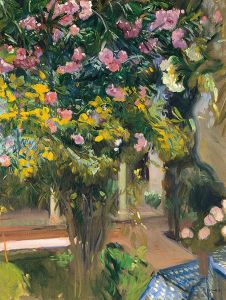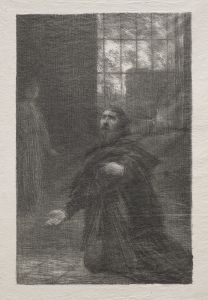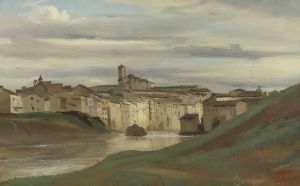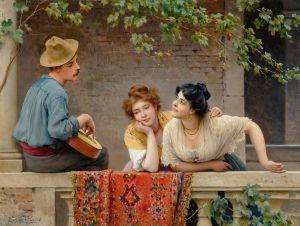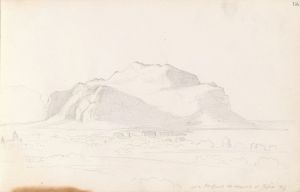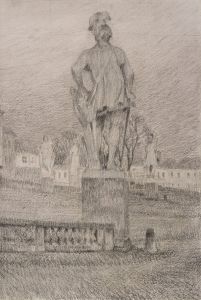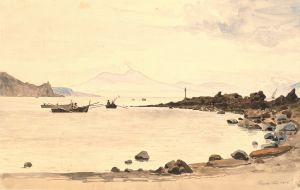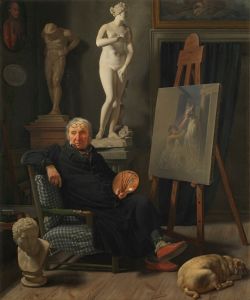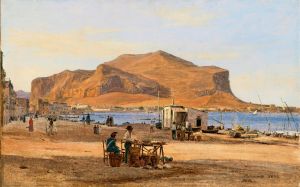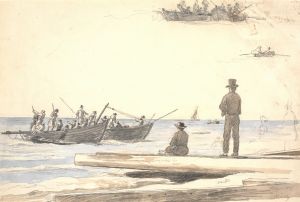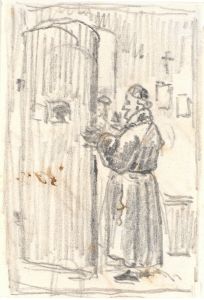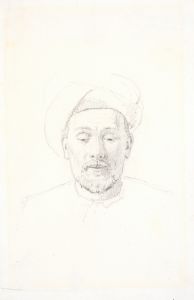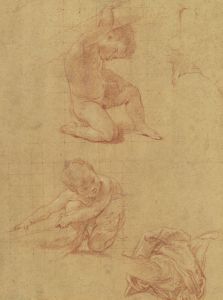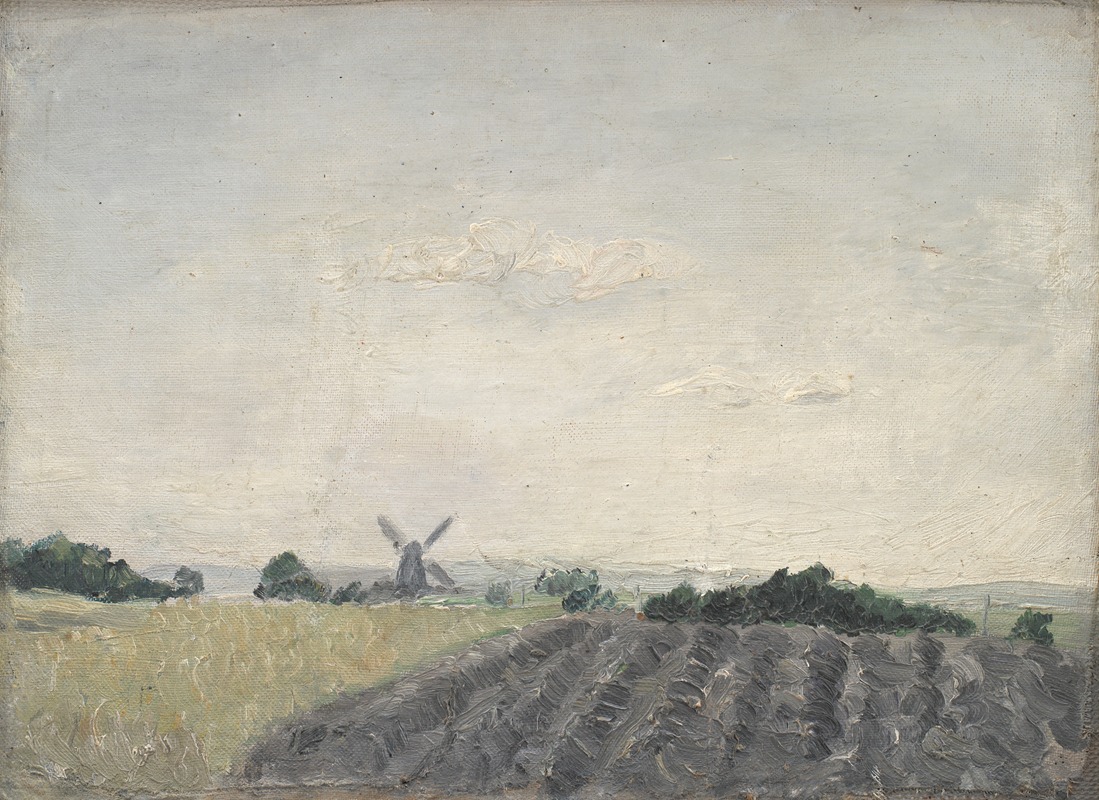
A Courtyard in Rome. Copy after Eckersberg
A hand-painted replica of Martinus Rørbye’s masterpiece A Courtyard in Rome. Copy after Eckersberg, meticulously crafted by professional artists to capture the true essence of the original. Each piece is created with museum-quality canvas and rare mineral pigments, carefully painted by experienced artists with delicate brushstrokes and rich, layered colors to perfectly recreate the texture of the original artwork. Unlike machine-printed reproductions, this hand-painted version brings the painting to life, infused with the artist’s emotions and skill in every stroke. Whether for personal collection or home decoration, it instantly elevates the artistic atmosphere of any space.
"A Courtyard in Rome. Copy after Eckersberg" is a painting by the Danish artist Martinus Rørbye, created in 1835. This work is a notable example of Rørbye's engagement with the themes of travel and cultural observation, which were central to his artistic output. The painting is a copy of a work by Christoffer Wilhelm Eckersberg, a prominent Danish painter and a key figure in the Golden Age of Danish Painting. Eckersberg was known for his detailed and realistic depictions of architecture and landscapes, and his influence on Rørbye is evident in this piece.
Martinus Rørbye was born in 1803 in Drammen, Norway, and later moved to Denmark, where he became an important figure in the Danish art scene. He studied at the Royal Danish Academy of Fine Arts in Copenhagen, where he was taught by Eckersberg himself. Rørbye's time at the Academy and his exposure to Eckersberg's teachings significantly shaped his artistic style, which is characterized by meticulous attention to detail and a keen interest in capturing the essence of his surroundings.
The painting "A Courtyard in Rome" reflects Rørbye's experiences during his travels in Italy, a journey that was a rite of passage for many artists of his time. Italy, with its rich history and vibrant culture, provided a wealth of inspiration for artists seeking to capture the interplay of light, architecture, and everyday life. Rørbye's depiction of the Roman courtyard is a testament to his ability to convey the atmosphere and character of a place through his art.
In this work, Rørbye demonstrates his skill in rendering architectural elements with precision, a hallmark of Eckersberg's influence. The painting captures the serene and timeless quality of a Roman courtyard, with its harmonious composition and attention to the play of light and shadow. The choice to create a copy after Eckersberg highlights Rørbye's respect for his mentor and his desire to engage with the artistic traditions that Eckersberg represented.
Rørbye's painting is not merely a reproduction of Eckersberg's work but also an interpretation that reflects his personal experiences and artistic vision. By choosing to replicate a scene from Rome, Rørbye aligns himself with the broader European tradition of artists who sought to document and interpret the classical world through their art.
Throughout his career, Rørbye remained committed to exploring themes of travel and cultural exchange. His works often depict scenes from his journeys across Europe and the Middle East, capturing the diversity and richness of the places he visited. "A Courtyard in Rome" is a significant piece within this context, illustrating Rørbye's dedication to capturing the essence of his experiences abroad.
Today, Martinus Rørbye is recognized as one of the leading figures of the Danish Golden Age, and his works continue to be celebrated for their contribution to the understanding of 19th-century European art. "A Courtyard in Rome. Copy after Eckersberg" stands as a testament to his skill as an artist and his ability to convey the beauty and complexity of the world around him.





